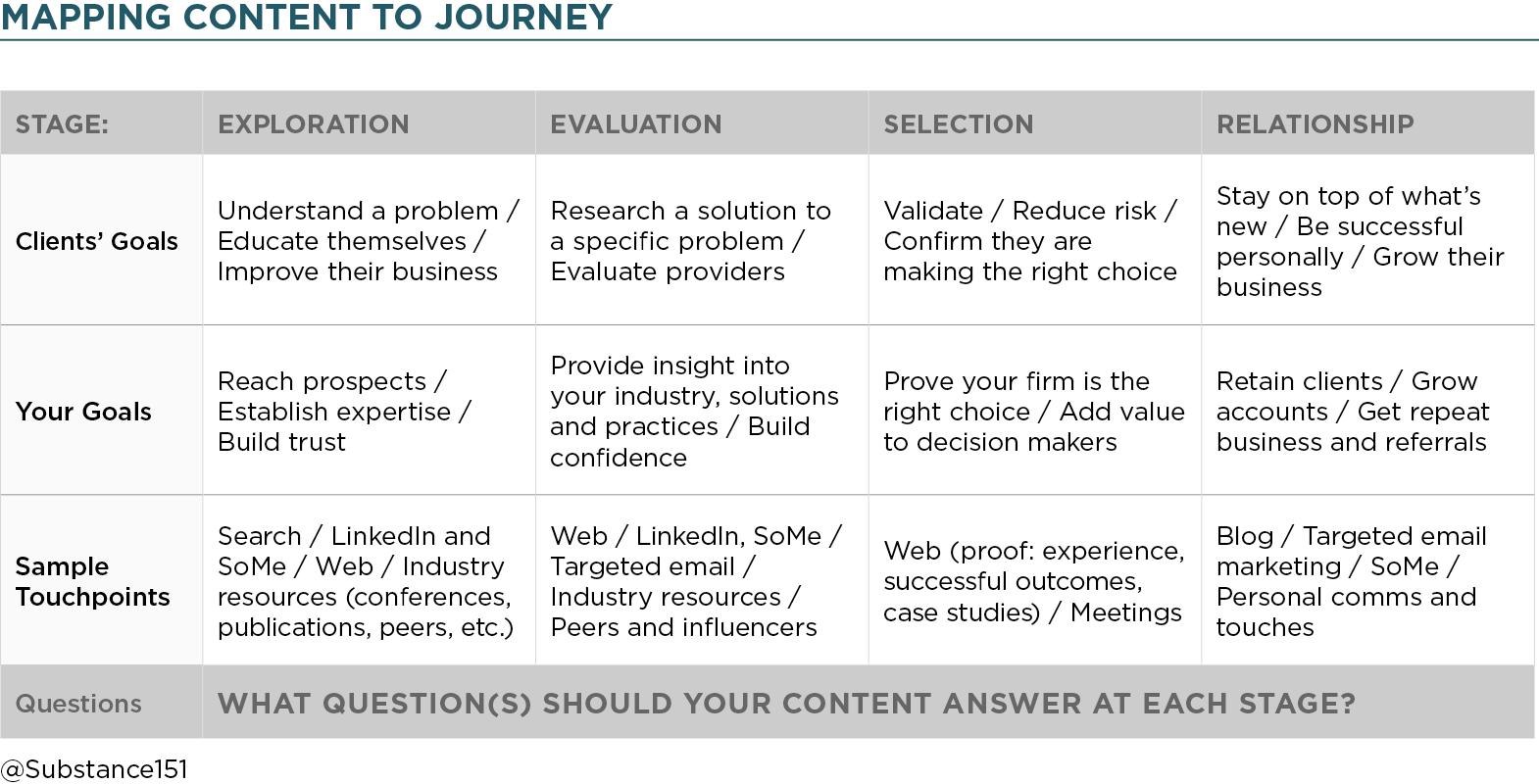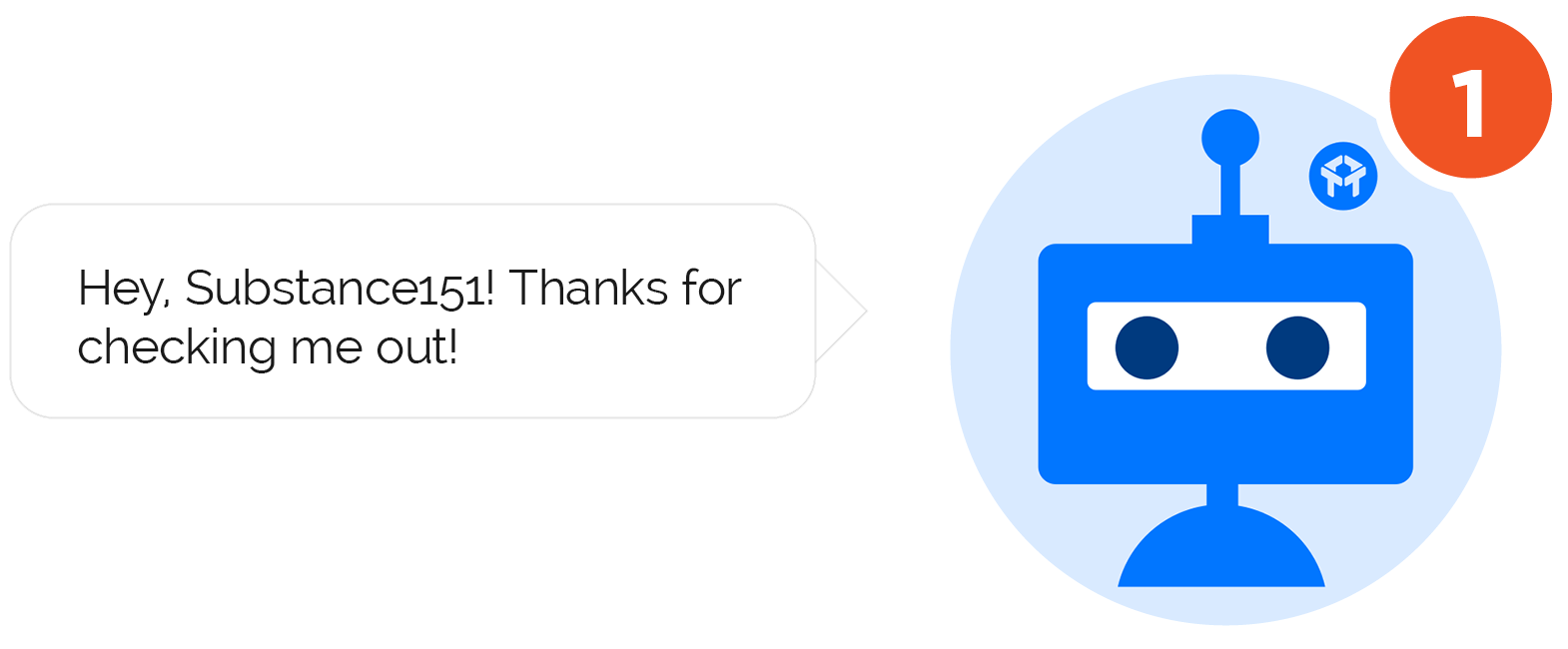
It’s also important to recognize that COVID didn’t start many of these disruptive changes; it simply accelerated them. Even before the pandemic, the way we develop business relationships had already started to change.
Not since the advent of the Internet has technology forced us to rethink how we win, serve & retain customers (source: Forrester).
To understand what’s behind this ongoing evolution, consider these three macro trends most responsible for driving change in the professional services space.
The most powerful source of disruption is the emergence of the hyper-connected business consumer. We are all consumers in our personal lives, and we don’t check that at the door when we come to the office!
People constantly talk about how disruptive technology is, but I believe that the customer, not technology, today is really the disruptive force.
Tiffani Bova, Sales Innovation Evangelist, Salesforce
Today’s fully digitized business consumers of all generations expect your company’s digital experiences to offer the speed and convenience available to them in their personal lives.
B2B marketers, especially those in more conservative industry sectors, have had a much steeper learning curve when it comes to digital as compared to their B2C colleagues. Until very recently, most service companies continued to rely heavily on personal relationships as their primary business development strategy. As a result, their adoption of digital and social channels, investment in SEO and online lead generation strategies, and tactics such as personalization and omnichannel have lagged behind.
The professional services industry is still relationship-based, and people still want to do business with people they like and trust. Yet, earning that likability and trust, especially with the next generation of customers, is not about martini lunches and golf courses. It’s about providing highly relevant, personalized experiences and content and meeting customers where they are, in any channel and on every device.
And this takes much more work than taking your prospects to lunch!
We often think of “digital” as impersonal, which is the opposite of how professional services companies approach marketing and business development. It’s all about deeply personal connections. But digital can be very personal, and technology can help provide a high degree of customization and personalization to prospects and clients – at their convenience, in real time.
A hybrid business environment is here to stay. A recent McKinsey research study found 70% to 80% of B2B decision makers now prefer digital, remote or self-serve engagement over face-to-face interactions.

To build visibility, credibility and trust, companies need to use technology and tools to engage business decision makers at all stages in their buyer’s journey and to build strong, lasting relationships. This is what we’ve always done! The difference is now we have to learn how to prospect, network and connect virtually, online and in social channels.
Companies need to engage their “ideal client personas” at the very early stages in their digital buyer’s journey long before they even become prospects – be visible and trusted long before your clients are ready to engage.
Building this level of trust online is essential in order to compete today and in the future. Achieving this level of trust online requires presenting a credible, trustworthy image on every channel – search, web, LinkedIn, social, voice, video, industry blogs and podcasts.
With the Millennials’ increased role in the decision-making process and Gen Zers entering the workforce, online search has become a trusted source for making informed business decisions.
Studies show that these business customers trust digital sources (such as search engines, corporate websites and social media) significantly more than advice from a company’s representative or a sales professional.

It’s important to note that very early in their research, your prospects don’t search for your company by name; they search by the type of expertise they need or by the problem they need solved. Does your company show up when your prospects enter search terms relevant to your expertise, services, solutions or types of projects?
Think beyond traditional B2B marketing tactics. For example, as consumers, we check ratings and reviews when considering a new purchase – even if it’s just a $30 gadget, not a multimillion-dollar contract. What’s the equivalent of consumer reviews on the business side? It’s the client referrals and testimonials, case studies, industry research and data that support your company’s point of view, and mentions from peers, industry influencers and trusted sources.
If local marketing is important – whether it’s for business development or recruitment – consider Google reviews. Yes, this is something your dentist does! Stop thinking of those as consumer reviews. Think of them as client referrals and testimonials and use the same thoughtful and strategic approach for obtaining them. Consider that when testimonials appear on your company channels (e.g., your website), only a small segment of your total ideal audience will ever see them. With Google reviews, you create an exponentially greater impact for search marketing and SEO.

In addition to their own research, today’s decision makers still value input from their peers. The difference is that an increasing number of referrals now come from people who have never worked with your company directly. Someone could share a link to your digital content in their professional network or post that link in their company’s Slack channel, making it visible to all executive decision makers.
More and more, solution providers research is moving from open platforms to private online communities. Prospects turn to their trusted peer networks first, and then they enter the recommended companies in Google search – which means that while SEO is important, being seen as an expert by your peers and industry influencers counts as much or even more.
And your “peers” are no longer limited to people you know personally: they are people you trust because you are part of the same private community.
So, the importance of personal referrals hasn’t changed, but how we get referred – or how we seek referrals – is different.
With today’s largely self-directed and digital buyer’s journey, your website is more critical than ever. And although this is no longer the only place where your audiences interact with your company online, it’s still your top brand ambassador, a proactive member of your business development and marketing team, and a lead generation and recruitment tool.
The goal of your website should be to provide the optimal customer experience.
Navigating your company through a website redesign is not an easy task, but it doesn’t have to be an ordeal. For more detailed information on the entire process from planning through post-launch, checklists and tips on avoiding common mistakes, download this e-guide.
A Customer-Centric Website Is Intuitive and Fast. With levels of patience at an all-time low, your website has to be fast and intuitive, especially for tech-savvy Millennials and Gen Zers – they are judging your company by its website’s performance. Make sure your user interface, technology and mobile experience are superior.
A Customer-Centric Website Creates Value for Visitors. Your website must be a reflection of your audiences, their buying preferences and the steps in their buyer’s journey, not your organizational chart. It must align with how your ideal clients and employees make decisions. It must answer their questions and provide the right information at the right time in their decision-making process.
A Customer-Centric Website Is Conversational. Design your website for self-service, but also make it easy for visitors to contact you and start a conversation. And do not provide just generic contacts; connect visitors with the right expert or the right regional leader. Make your people accessible! Your prospects can’t have a conversation with a generic contact form or an info@ email address.
It’s also important to note that today’s decision makers prefer to initiate their first contact from your website versus picking up the phone. Phone aversion is real for Millennials and Gen Zers (and many Gen Xers), and that changes how your company should handle customer interactions.
Are You Building the Right Website?
Content is an essential part of the digital journey. According to one research study, business decision makers consume 13 pieces of content before making a decision.

Content builds brand visibility, reputation and trust. It showcases your company’s expertise and ability to solve your client’s problems.
Content opens new doors. Content marketing helps your company be found by a whole new segment of prospects who may not even know your company exists. This is an opportunity to expand your reach. It’s prospecting without cold calling. This is what’s at the core of inbound marketing strategy – content bringing prospects to you.
Content also keeps your company top of mind between opportunities, helping you maintain and expand existing client relationships.
What we hear from your clients is that they don’t want traditional “personal touches.” They want companies to help them do their jobs, advance their careers, reduce risk, and enable them to make better, more informed business decisions.
Your content must deliver personal value to individual decision makers within your client organizations.
To make your content useful, relevant and effective, you must tailor it to the needs of your individual client personas at different stages in their decision-making process.

Begin with developing your Ideal Client Profiles (ICP) – these are the types of organizations your company wants to do business with. For each ideal client, there are typically multiple decision makers and influencers. These are your buyer personas.
Get to know your key personas and what drives their business decisions! Remember, the goal is to build meaningful relationships with real people.
When developing personas, focus your research on what would help you tailor your content and experience to each one:
Map a journey for each persona – the entire life cycle: from awareness to the first opportunity, onboarding, retention and repeat business. Look at it from their perspective! What are their goals? What are they thinking? What topics and content would be most useful to them (and, as a result, most effective for your company)?
We often see journeys mapped around a company’s sales funnel. Don’t do that! Instead, map around your customers and their processes. Then develop and deliver useful content for each stage and at every digital touchpoint.
When putting together a distribution and promotion plan for your content, keep in mind that with social media platforms or someone else’s blogs and podcasts, you don’t own the audience. If a platform is gone, so are your followers. Try to convert your audiences to your company-owned channels – for example, offer downloads that bring them to your website and encourage them to opt into your email list.
If lead generation is your goal, selectively consider paid social. It has become very difficult, if not impossible, to reach your goals without adding some paid component to your organic social media strategy.
Start with LinkedIn, where you can be very targeted in putting your educational and thought leadership content in front of highly qualified prospects you could not reach otherwise – because they are not following your company’s LinkedIn page and are not connected to you personally, online or in real life.
Personalization is presenting tailored content and experiences to specific segments of your audiences – in real time. Think about how online retailers provide recommendations for what “you may also like” based on your shopping history or search patterns.
Imagine if your website could dynamically present relevant case studies and educational content with customized calls to action based on your prospects’ IP address or browsing patterns or actions taken. There are many technologies on the market today to make that possible.
However, to personalize content and experiences and to present tailored communications to individual customers, you need to have meaningful customer data. Even for simple actions like sending emails customized for specific time zones, markets or geographies, you must have that information about your prospects and clients – not just their email addresses.
Personalization starts with data. If you don’t have all the insights, you won’t be able to personalize effectively.
Kirsty Dawe, Really B2B
Professional services companies have to get much better at asking for information and collecting customer data. Luckily in our industries, we don’t need to get too personal, like their household income or shoe size.
So stop asking for email addresses only in your subscribe forms because you’re afraid that it will discourage people from subscribing. If they don’t, they probably don’t have a real interest in your company or what it has to offer. If they do see the value – and this is key, you have to deliver value, not self-promotion – they will gladly “pay” with some basic information in exchange for more relevant content and communications. This is especially true for Gen Zers.
44% of Gen Zers will share their personal data in exchange for a more personalized versus generic digital experience. (source: WP Engine Generation Influence U.S. Report, 2018)
ABM is a sales and marketing approach that uses personalization to attract and engage select highly profitable or otherwise “ideal” client accounts.
This strategy is especially effective for client organizations where you need to reach many different decision makers and influencers, sales cycles are long and complex, and the dollar value of each opportunity is very high.
The idea behind ABM is that instead of pursuing hundreds of prospects with the same generic messages and content, you focus on creating and delivering highly personalized one-on-one communications and experiences to a select few highly valuable accounts – and you use technology to do this at scale.
The metaphor often used to describe ABM is fishing with a spear, as opposed to fishing with a net.
ABM is all about building better quality relationships; the ROI will follow.
Andy Bacon, B2B Marketing
Chatbots
More and more you are going to see chatbots as a standard feature on corporate websites. This personalized approach uses artificial intelligence to present tailored questions one at a time, instead of a generic one-size-fits-all contact form – very similar to real-life conversations. In fact, this is called “conversational marketing.”

Stop thinking of chatbots as a tactic suitable only for online retail – or that chatbots are annoying. They can be, but that’s up to you – and how thoughtfully (or not) you implement the technology.
You have to look at the engagement process through the eyes of your audiences and design digital interactions and experiences that are useful and personalized to them.
For example, think about what your website visitors want:
And since your team can’t be available 24/7, you can see how a chatbot could be the next best thing!
Video Messaging
Video messaging is more than simply presenting content in a video format. It’s about personalizing and humanizing one-to-one outreach that was traditionally handled via text, email or even phone.
You can send video messages through email, text or social channels. Similar to traditional email or text communications, people can watch and respond in real time or at a time more convenient for them.
Use video messaging for business development outreach or follow-ups, new client or employee welcome, project progress reports, team updates and other internal and external communications.
To help you use this tactic effectively, select a video messaging platform that offers seamless integration with your existing marketing technology and offers comprehensive analytics, automations and other management and tracking tools.
Using LinkedIn and social media channels to engage with prospective clients and employees aligns with how people today prefer to prospect, connect, network and build business.
LinkedIn is instrumental for building a stronger online reputation, expanding your network, and generating and nurturing leads. It’s the closest you can get to building relationships in real life.
Gen Xers and Millennials are on LinkedIn. Gen Zers also value LinkedIn for making business connections, and it will continue to be an effective recruitment tool.
To successfully conduct business on LinkedIn, make sure your company page and key employees’ profiles are fully optimized. Remember it’s about credibility, likability and trust. People cannot like, trust or build relationships with faceless avatars.
Although it may be challenging for B2B companies to leverage channels traditionally perceived as highly youth- or consumer-focused, you have to meet your audiences where they are. And social channels are where many of your prospective clients and employees turn first.
It’s important to understand that each social channel is better suited for specific communications and content and each has its own etiquette and rules of engagement. Know what type of content is appropriate. Stop sending the same post across all channels with one click of a button simply because you have the technology to do so. The same rules of relevancy and personalization apply to social.
Unless you have the time and resources to continually experiment with multiple channels, the wisest approach is to pick a few that match your goals and your brand and do those few extremely well.
From the moment we wake up in the morning to the moment we fall asleep at night, we seamlessly glide between physical and virtual environments. Yet in professional services marketing, there is still a tendency to separate all things digital. Companies continue to reference “digital marketing.” Let’s get this straight: It’s just marketing.
You don’t have to be digital-only. You will still be doing proposals, trade shows and in-person networking, and print isn’t dead. But you have to be digital-first, or you will be left behind.
Download a free PDF of this article here.